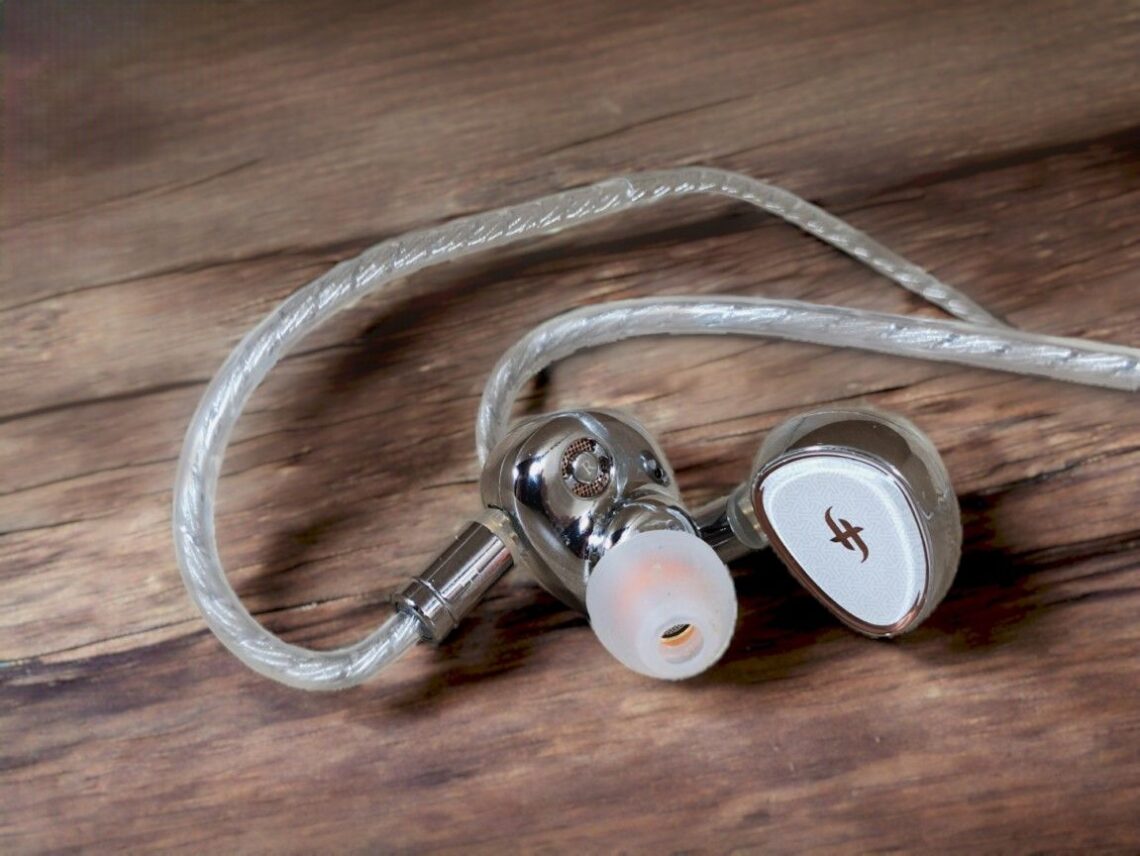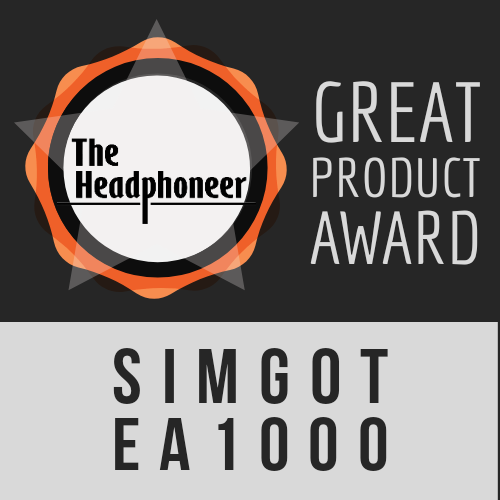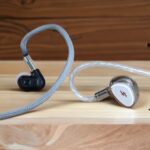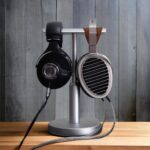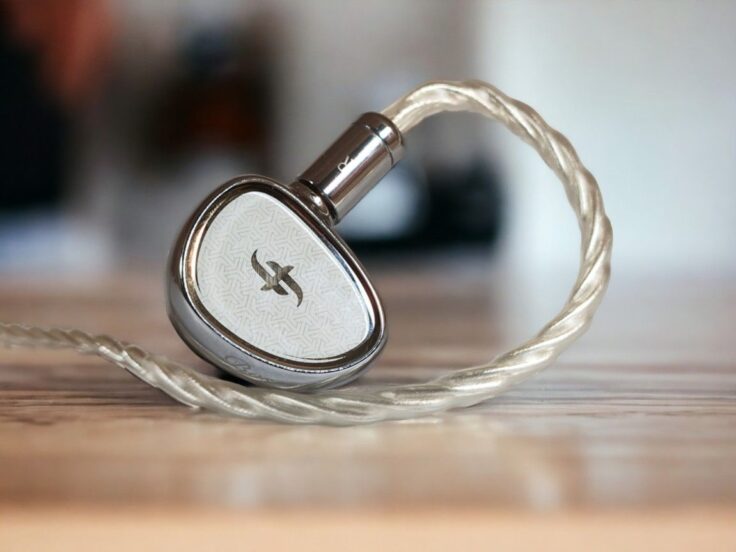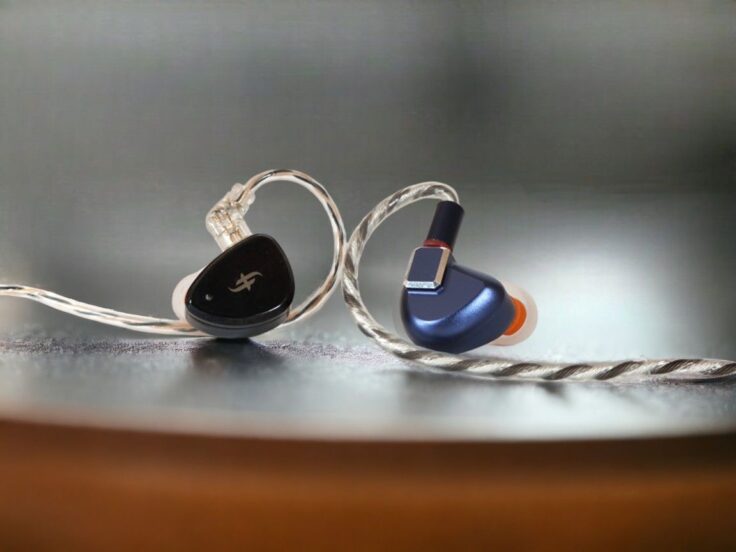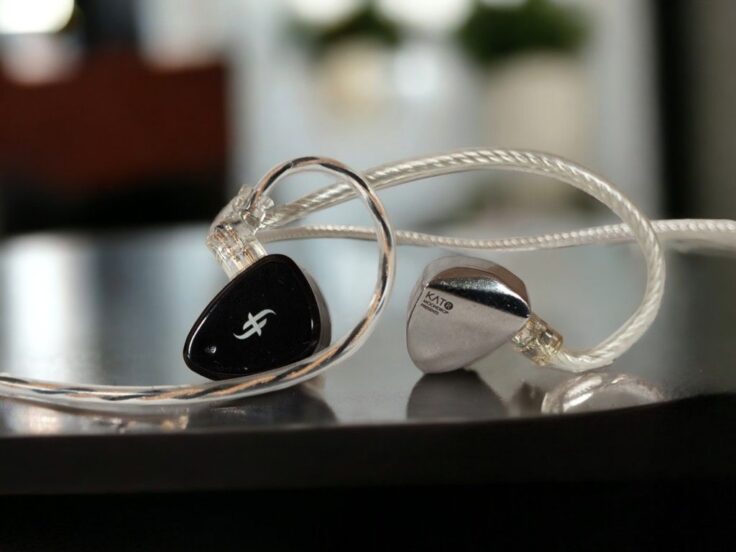The EA1000 Fermat is Simgot’s second most expensive IEM. It has many similarities with the flagship EA2000 Boson both in terms of externals and internals. As the flagship, it is a single Dynamic Driver (DD) IEM. It’s a semi-closed construction utilizing a passive radiator along with the driver.
The EA1000 employs a single 10mm Dynamic Driver which takes care of the whole frequency spectrum. It is the second generation of Simgot’s DMDC “Dual Magnetic – Dual Chamber” driver, which has the unusual construction of having both inner and outer magnetic circuits. This increases magnetic flux. Magnetic flux is the strength of the magnetic field and this improves control, which of course is good for sound reproduction in a range of ways.
For the diaphragm, Simgot uses something they call SDPGD-technology: Sputter Deposition Purple-Gold Diaphragm. In their own words, it is “… a specialized diaphragm manufacturing process resulting in a diaphragm with high rigidity, lightweight properties, and a purple-gold color…” The color of the diaphragm doesn’t really matter, but the structural properties of the diaphragm certainly affects the sound.
The EA1000 combines the 10mm full-range dynamic driver with a 6mm passive radiator. A passive radiator is a diaphragm with no coil and magnet that passively responds to the air pressure inside the chamber which fluctuates with the main driver. It is the middle way between an open chamber and a closed chamber. It gives more control and can, if done properly, maintain stability and driveability. The EA1000 has large “vent holes”, which cover the passive radiator, allowing it to move freely.
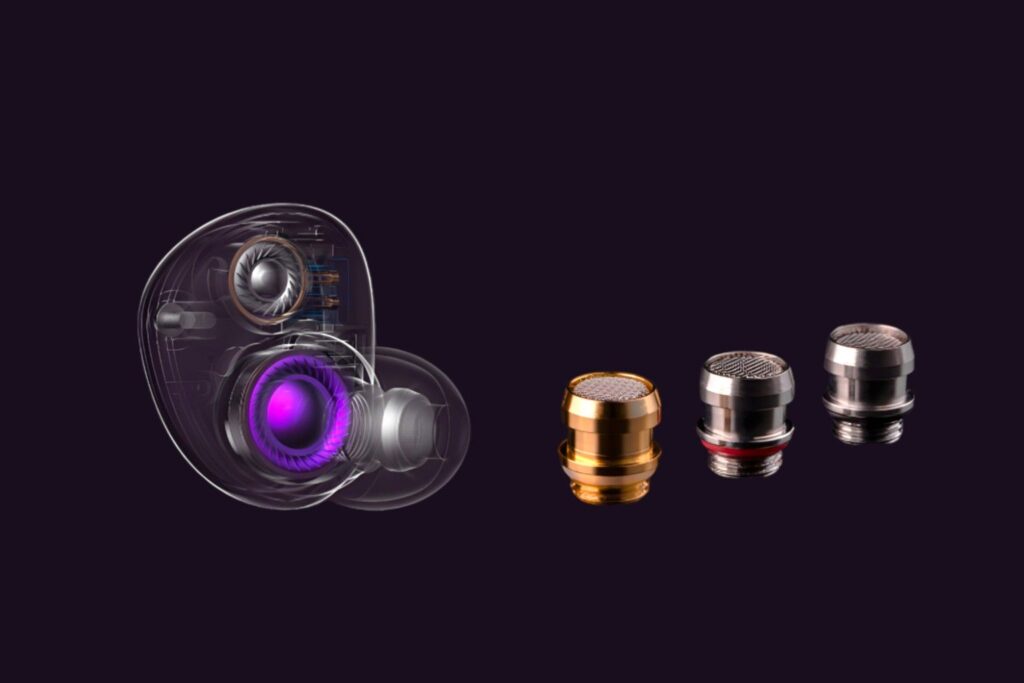
The EA1000 comes with 3 pairs of replaceable nozzles with different acoustic properties. The nozzles are threaded and can be screwed on and off easily. They affect the impedance of the driver, in other words, the resistance it faces in the nozzle. They also act as a sound filter.
The three nozzles function as three different tunings and are quite effective. They fine tune the frequency response without negatively affecting dynamics and detail reproduction as far as I can tell after extensive listening.
By switching nozzles you can tune the IEM to fit your own preferences. I did quite elaborate listening tests and will come back to how each nozzle sounds.
SIMGOT EA1000 SPECIFICATIONS
- Driver: 10mm Dual-Magnetic & Dual-Cavity Dynamic Driver
- 6mmPassive Radiator
- Diaphragm: Multi-Layer Sputter Deposition Purple-Gold Diaphragm
- Impedance: 16 Ohms ±15% (@1kHz)
- Sensitivity: 127 dB/Vrms (@1kHz)
- Frequency Response: 10Hz-50kHz
- Effective Frequency Response: 20Hz-20kHz
- Detachable Cable: 120 cm Silver-Plated OFC Litz Cable
- Earphones connector: 0.78mm 2 pin
- Cable termination: 3.5mm
- 3 pairs of tuning nozzles included
Check the current price:
Linsoul: Simgot EA1000
Amazon: Simgot EA1000
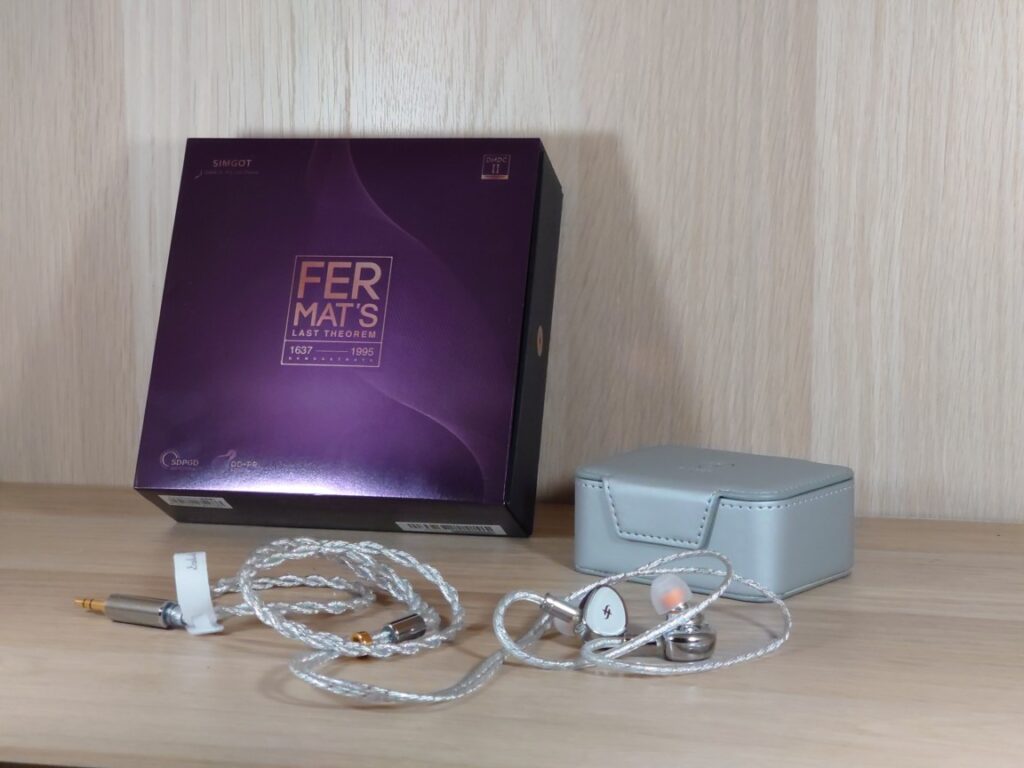
BUILD AND COMFORT
The EA1000 housing is an all metal construction with a decorative glass faceplate. The build quality is excellent and the craftsmanship admirable. They are relatively heavy but not as heavy as the iKKO OH10. I find them to fit comfortably in my ear.
I also like the supplied cable. It seems to be well constructed and is neither too thin nor too thick. It also has some friction to it, which is good. It has the usual ring that you can use if you wear the cables behind your neck like stage performers do. The extra nozzles come mounted on a sturdy metal plate which is a very practical way to store them. You just screw them into the threaded holes and they are fixed to the plate until you need them.
The packaging is excellent. Everything comes in a very nice cardboard box with small cardboard boxes that fit perfectly inside it. I usually do not comment on unboxing experiences but I must admit that I was really impressed. It’s not excessive, it is just extremely nice and efficient at the same time.
The supplied storage box is also very nice. It has a magnet lock and it’s size is perfect: Not so small that it is a pain to make the IEMs fit, but it is not larger than it has to be either. It is not, however, suited to put in your skinny jeans pockets, but it is perfect for storage and traveling. Definitely one of the best storage boxes I have come across.
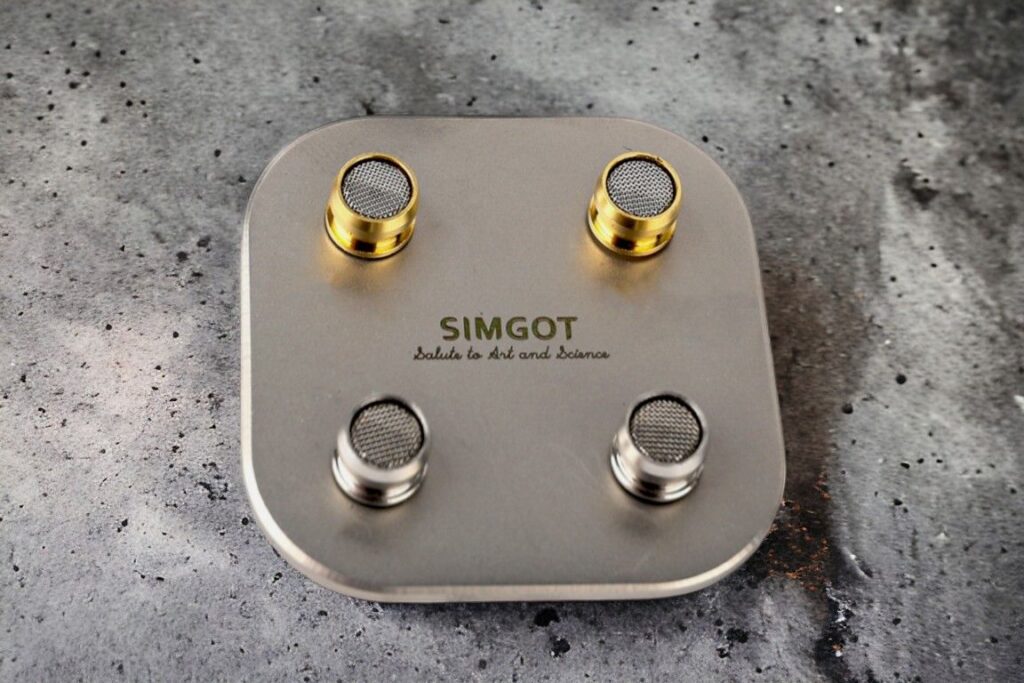
LISTENING IMPRESSIONS: THE THREE TUNING NOZZLE COMPARED
The RME ADI-2 DAC FS was used as a standalone DAC/Amp for the EA1000 in this session.
I did quite extensive listening tests with all three types of nozzles using the same music. The nozzles are quite different and as you will see I went a bit back and forth to get a grip on the differences. In short, I start with the most bassy and dark-sounding one (nozzle 1) and finish with the least bassy and brightest sounding (nozzle 2).
NOZZLE 1: Stainless Steel With Red Ring (Red Line)
Frequency response curve by Simgot:
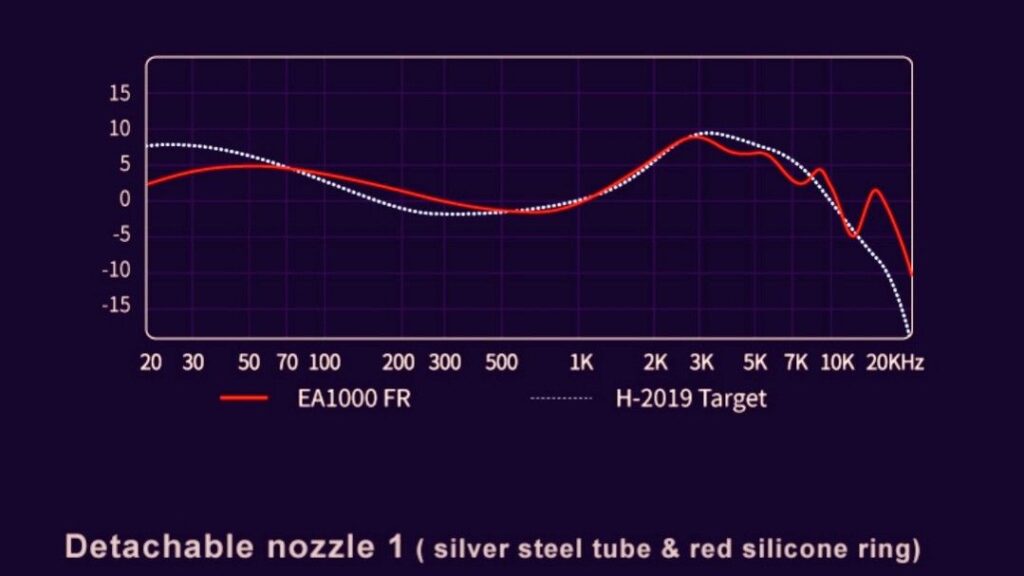
Smile by Pearl Jam
The bass is really punchy and definitely on the stronger side of neutral. It’s very well defined and you can hear lots of texture. There’s a great sense of spaciousness and detail. It’s very easy to follow the instruments. There is no hint of sibilance here, even though this track can induce that in several headphones.
Jambi by Tool
One of my favourite songs by Tool. The bass guitar is fantastic. The presentation is very energetic and has a high level of detail. It’s tight yet with a very full-sounding low-end.
Some Day My Prince Will Come by Coryell-Coryell-Vitous Quartet
The bass is again very present. The electric guitar sounds warm and delicious. Nicely detailed and subtly nuanced.
Almost Like the Blues by Leonard Cohen
The bass is very powerful. Cohen’s voice is full of texture and the low end of his voice is full sounding. The rattle percussion is a bit less pronounced than I am used to, but everything is well-defined and nicely separated.
Spontanius Compositorius by Thomas Agergaard + Reed 5
I like this track because not only does it have a beautiful melody played by the saxophone, but it also has experimental and very varied percussion that really challenges the treble performance capability of any music playback equipment. And I am pleased to say that the EA1000 performs excellently. There’s tons of detail in the treble. It’s crisp and clear without getting fatiguing. The saxophone is full and has a good amount of tonal weight. The standing bass is not holding back and I wouldn’t want any more quantity than this.
Black Crow by Cassandra Wilson
The bass drum is very full. It wouldn’t be preferable to me if it was more present than it is, to put it that way. The soundstage is reasonably big. The separation is great and the treble detail level is high. Wilson’s voice is nicely present but the bass is quite strong and competes for attention.
Mahler’s Symphony no 2 – part III by Paavo Järvi
The deep and full bass comes to its right with the kettle drums in the opening. The presentation is very nice. The strings are delicate and nuanced. When the brass instruments hit after a while they are powerful and crisp.
Bored by Deftones
This sounds a bit uninspiring, to be honest. It sounds too dark for my taste and all the textures from the electric guitars are not rendered like they can be. As I’ll come back to, the other nozzles sound much better.
Escape Route by Boris Blank
With this electronic music track, a lot is going on, but there is no doubt who is the boss. The bass is really having a firm grip on the music. Generally, the track sounds warm and rich, there’s lots of detail but they aren’t very crisp.
Desert Island Disk by Radiohead
The bass drum is quite strong and competes more for my attention with the acoustic guitar than I’m used to. The guitar is nicely rendered, and relatively crisp. The vocals are present, with a slightly dark tonality.
As Before by Olga Konkova
The cajôn drum is very punchy and quite dominant in the mix. The vocals and piano are rendered with much detail but are relatively soft and toned down, as you will see, not as clear and crisp sounding as with the other nozzles. The soundstage and imaging are good.
Young Vivaldi RV813 III by Ensemble Modo Antiquo
The strings sound great, but I’ve heard them crisper. They have a very nice amount of texture and tonal weight.
NOZZLE 2: Gold / Brass (Yellow Line)
Frequency response curve by Simgot:
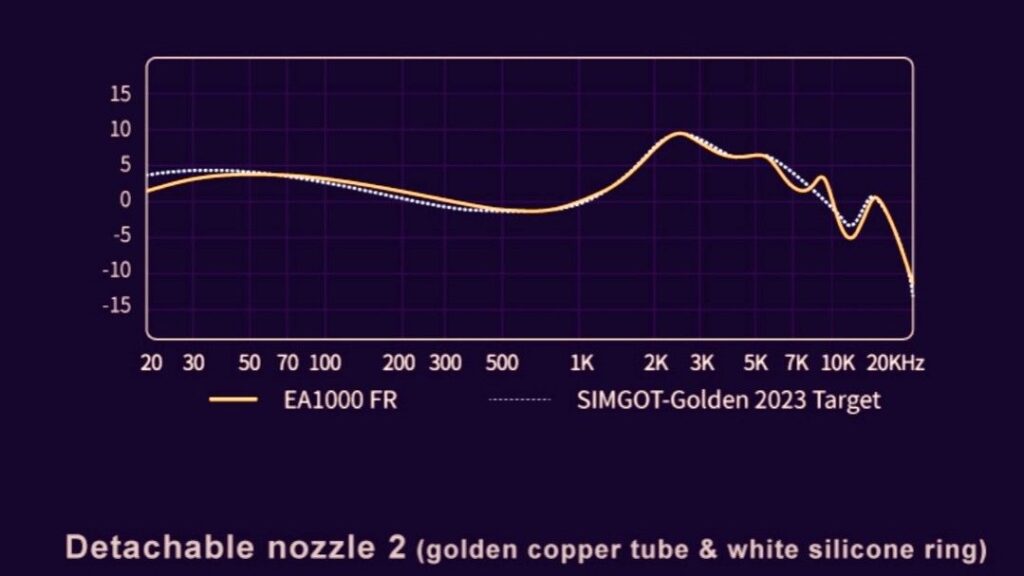
Smile by Pearl Jam
The reduced amount of bass lets the midrange and treble shine. The bass is still really punchy, but now it’s better defined and has even more texture. There’s more air and space and still no hint of sibilance.
Jambi by Tool
The bass guitar is still fantastic and the presentation is still very energetic. There’s even more detail now, it sounds even tighter. The bass is still strong but not bordering on being overwhelming.
Some Day My Prince Will Come by Coryell-Coryell-Vitous Quartet
The bass is a little less dominant and lets the electric guitar’s warm and delicious sound come through more. It’s still nicely detailed and subtly nuanced.
Almost Like the Blues by Leonard Cohen
The bass is less powerful with the brass nozzles, and that’s very good. Cohen’s textured voice comes more to its right, and the rattle percussion is a bit more present.
Spontanius Compositorius by Thomas Agergaard + Reed 5
Also here, the brass nozzles sound better to me. The low end is brought a little bit down and there is more air. All the good qualities are intact but there is more space and the presentation feels lighter and more energetic in the upper mids and treble because the bass is less meaty. It is in other words less bass-heavy and more balanced.
Black Crow by Cassandra Wilson
The drums are better balanced in the mix and compared to the red ring nozzles. The soundstage is bigger and the separation is still great, if anything it is better. Wilson’s voice is definitely more present in the mix. All the ambient sounds and various percussion elements also are brought forward now that the bass is reduced.
Mahler’s Symphony No. 2 part III by Paavo Järvi
The kettle drums still hit hard but the strings have more upper midrange and treble energy, which I really like. There is more air and dynamics in the upper regions with the brass nozzles.
Bored by Deftones
This sounds a lot better than with the red ring nozzles. It is more crisp and clear, yet the bass is very prominent but without drowning the rest of the spectrum. The treble is quite crisp and clear, letting more of the details come through, albeit not to the same degree as with the even brighter black ring nozzles, which I’ll come to soon.
Escape Route by Boris Blank
The bass isn’t as dominating as with the red ring nozzles, but still quite strong. I like the brass nozzles, even though I prefer the brighter presentation of the black ring nozzles even more. That being said I find the brass nozzles’ presentation satisfying and it’s a great listen. There’s still lots of detail and I suspect this rendering is truer to the intended mix.
Desert Island Disk by Radiohead
The bass drum in the intro is not as dominant as with the red ring nozzles. I prefer this presentation. The acoustic guitar sounds warm and crispy at the same time with lots of nice texture. The vocals are warm and full-bodied. The presentation is not as crispy and detailed sounding as with the black ring nozzles, but it is a nice blend of the red ring and the black ring nozzles.
As Before by Olga Konkova
The cajôn drum hits almost as hard as with the red ring nozzles, the piano and the vocals are not quite as clear as with the black ring nozzles. The soundstage and imaging are good. It sounds quite dynamic, but more in the lows than in the mids. The highs are very well articulated.
Young Vivaldi RV813 III by Ensemble Modo Antiquo
Compared to the two other nozzles I think this chamber music piece is rendered the best with the brass nozzles. It is not as dark-sounding as the red ring nozzles and not as bright-sounding as the black rings. There’s great separation and lots of texture to the strings. They are very delicately rendered, and the performance is well-balanced with great timbre.
NOZZLE 3: Stainless Steel With Black Ring (Blue Line)
Frequency response curve by Simgot:
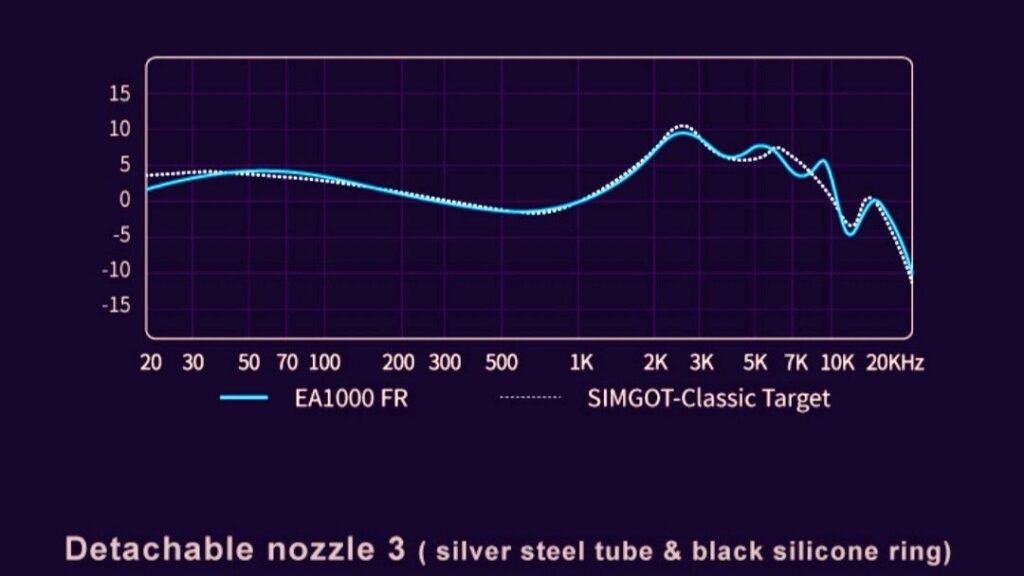
Smile by Pearl Jam
Now, here it is very apparent that the nozzles are different, especially compared to the steel nozzles with the red ring. Even though the bass is still punchy, the EA1000 no longer sounds especially bass-heavy. The electric guitar riff and the harmonica are both a lot brighter sounding, clearer and crisper. Mostly it is a good thing but there is now a hint of sibilance when Eddie Vedder sings his “S”-es.
Jambi by Tool
The bass guitar is now pushed further back in the mix. It’s of course still there, but now the bass sounds very neutral and I would never call the EA1000 a bassy-sounding IEM. The vocals, percussion and guitar get much more attention. It’s actually quite amazing how much difference there is.
Some Day My Prince Will Come by Coryell-Coryell-Vitous Quartet
The bass is now much less pronounced and the electric guitar is given more space in the mix. The presentation is crisper and brighter, I appreciate the reduced amount of bass but the guitar sounds less warm than with the other nozzles. There is a bit more air and spaciousness to the presentation than with the other two. It sounds very open.
Almost Like the Blues by Leonard Cohen
The bass is even less powerful than with the brass nozzles. Cohen’s textured voice is bright and even more upfront. The rattle percussion is very present now.
Spontanius Compositorius by Thomas Agergaard + Reed 5
Compared to the brass nozzles, the bass is brought even more down and there is an even stronger sense of air. All the good qualities are intact but there is even more space and the presentation feels even lighter and more energetic in the upper mids and treble.
Black Crow by Cassandra Wilson
Now the drums are nicely balanced and not dominant like they used to be with the red ring nozzles. The soundstage is bigger and the separation is better. Wilson’s voice is now perfectly present, taking centre stage – as it should. The ambient sounds and percussion elements are crisper and easier to follow.
Mahler’s Symphony no 2 part III by Paavo Järvi
I find it to sound pretty similar to the brass nozzles here, which is a good thing.
Bored by Deftones
This track sounds absolutely fabulous with these black ring steel nozzles. It was kind of muffled and dull with the red ring steel nozzles. There is much more detail and texture now and the bass still hits hard. It feels even more tight and pronounced because everything is more balanced and coherent with more separation. The brass nozzles were also good, but not quite as good as the black ring steel nozzles.
Escape Route by Boris Blank
There is so much going on in this track and I find that EA1000 is very well balanced with the black ring nozzles. There are details in spades, the bass is still punchy and I do not really find this track needs more bass than this. Excellent performance.
Desert Island Disk by Radiohead
I find this to sound very well-balanced. The vocals really come through. The bass drum in the intro is nice and not overdone; it lets the acoustic guitar take centre stage. There are also even more details all along the frequency spectrum. Great timbre too.
As Before by Olga Konkova
The cajôn drum has a very nice punchy sound even with the least bassy (black ring) nozzles. The vocals and piano are clear and crisp sounding with nice presence and timbre. The soundstage and imaging are good. It sounds extremely dynamic across the frequency spectrum.
Young Vivaldi RV813 III by Ensemble Modo Antiquo
With this chamber music piece, there’s great separation and lots of texture to the strings. They are very delicately rendered, and the performance is quite bright. Not in a bad way, but I did prefer the brass nozzles for the extra warmth and body it gave the strings.
CONCLUDING ON NOZZLES
Frequency response curves by Simgot (overlay) and compared to the Harman 2019 curve:
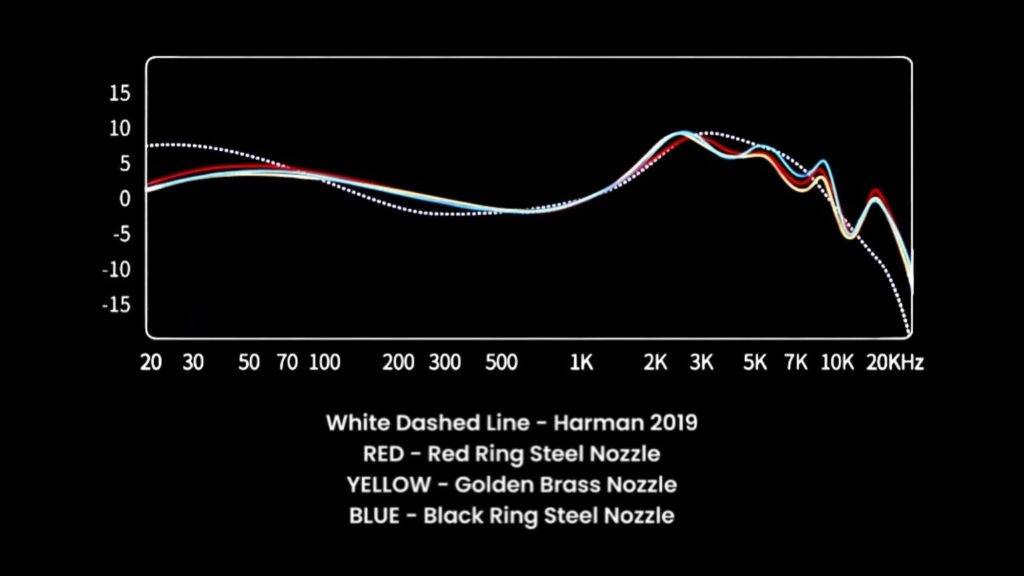
I am very impressed with how well-implemented these three nozzle types are. Often such tuning options result in subpar performance for some of the variants, but in this case, I find that the EA1000 performs very well with all three alternatives.
The three nozzles represent three different sound signatures. They affect the sound frequency response curve but the detail level, dynamics and sound stage are not that much affected. The perceived level of dynamics and detail will of course vary depending on the frequency response but I find that the EA1000’s technical performance is quite similar across nozzles.
The differences are very obvious when you go from the red ring nozzle to the black ring, but the brass nozzle sits perfectly in the middle of the two in all important aspects.
NOZZLE 1 – STEEL WITH RED RING
This nozzle gives a bass-heavy sound signature. The bass is powerful, yet well defined. The midrange is smooth and soft and the treble is detailed but not very bright. Even though it is warm and lush and has a heavy low-end, it is not muffled or unclear. I do like how it sounds but I always ended up preferring one of the other two nozzles. I generally prefer a linear bass response. However, this is the best bass-heavy IEM I have heard to date, and I appreciate that the treble isn’t elevated as in the typical V-shaped sound signature IEMs.
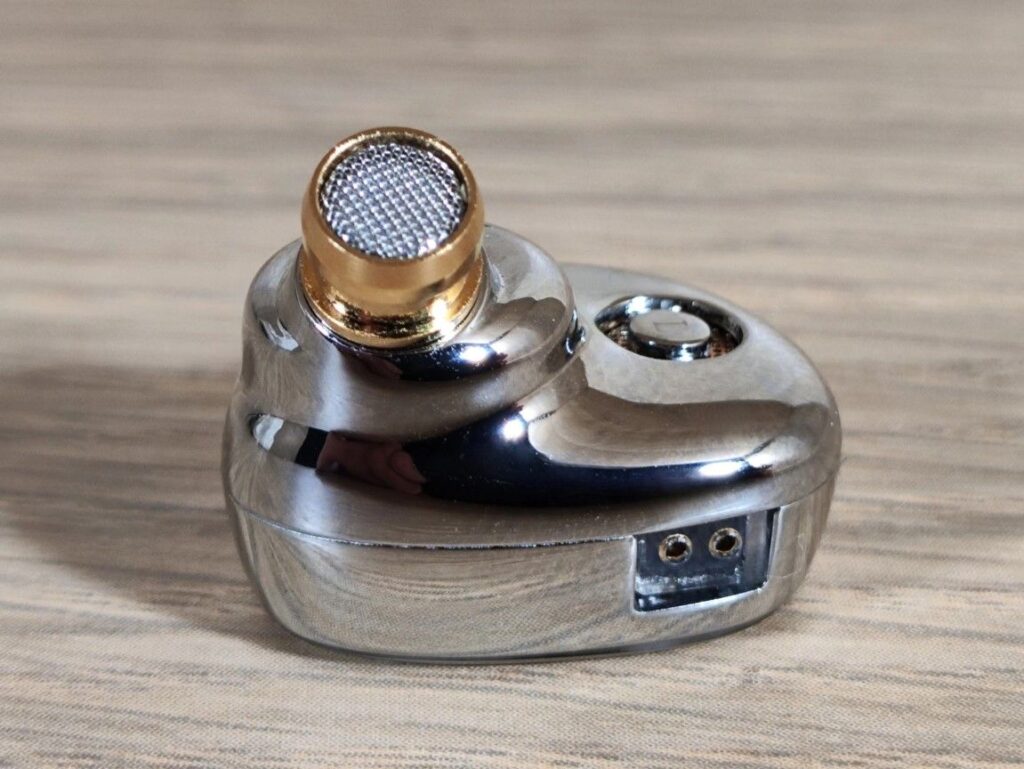
NOZZLE 2 – BRASS WITH CLEAR RING
This reduces the bass and brings the mids and the treble more to the front while still keeping the bass above neutral, albeit reduced in quantity. The mid-range is clearer and more upfront but retains quite a lot of warmth and body. The sound is generally tighter and clearer and with more air than the red ring nozzle. This is my preferred all round choice, even though I often prefer the black ring nozzle.
NOZZLE 3 – STEEL WITH BLACK RING
This is the most different from the standard red ring nozzle. The bass is brought down to quite neutral levels, the treble is crisp and clear but not fatiguing. The mid-range is also quite upfront. With many tracks, this is my favourite tuning.
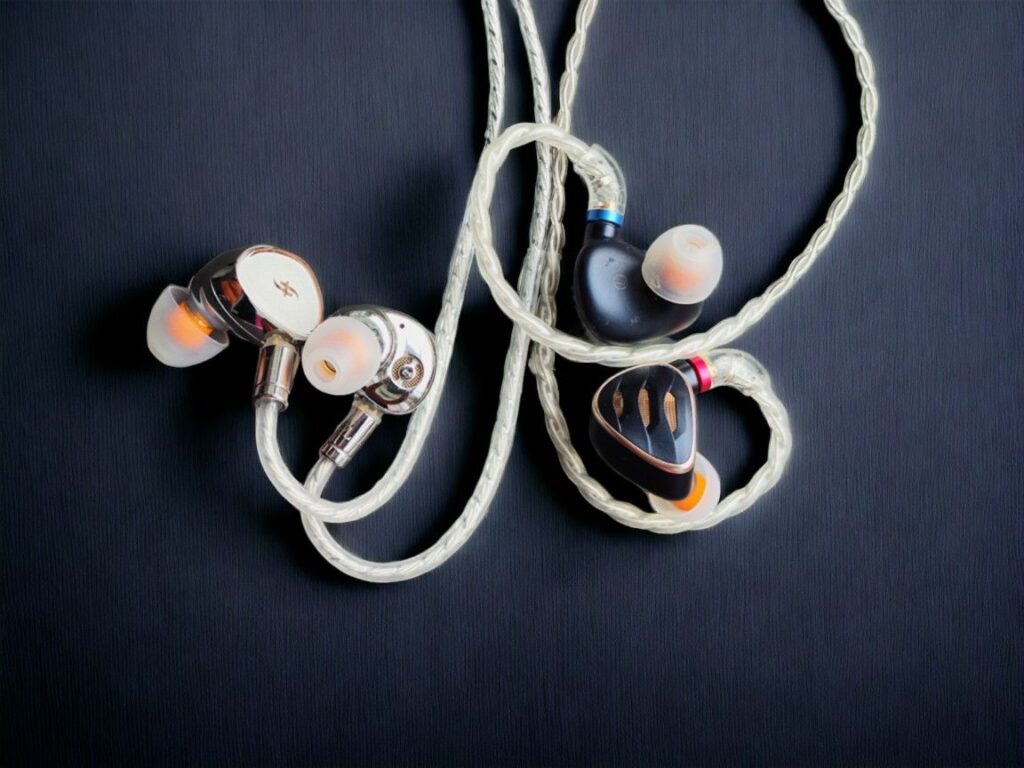
COMPARISONS
I have written several in-depth comparisons between various IEMs and the Simgot EA1000. In the following, you will find a summary of them.
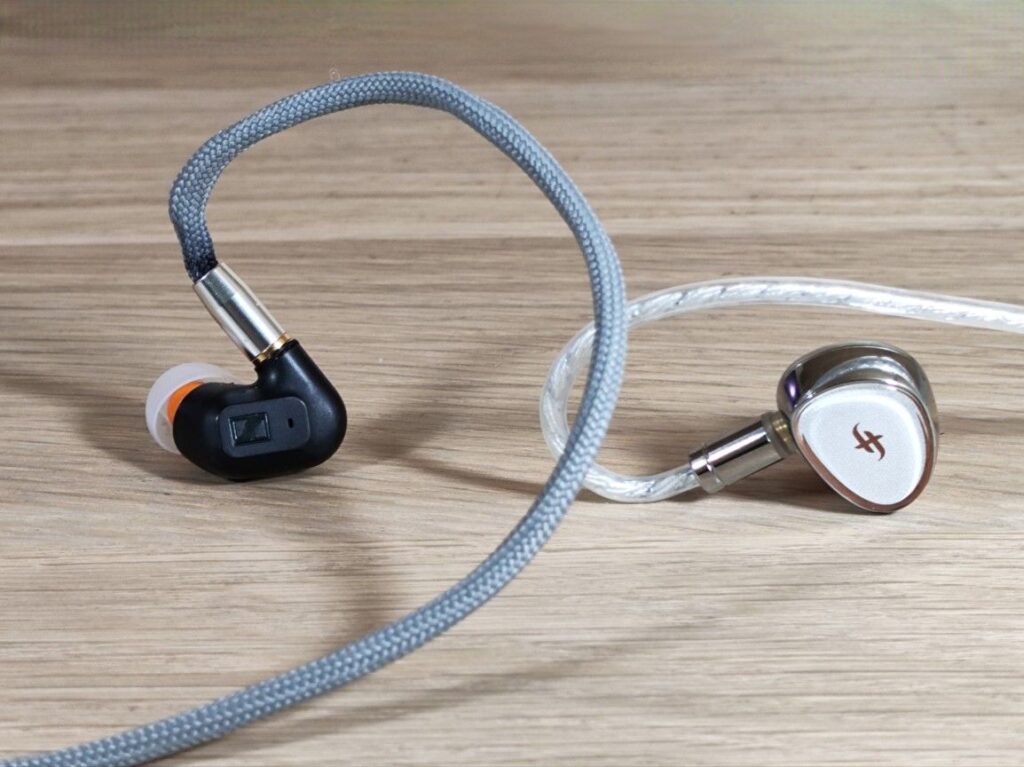
SENNHEISER IE200 vs EA1000
The Sennheiser IE200 is a 7mm single Dynamic Driver IEM that I find to be a very solid performer.
Both IEMs offer a neutral and natural sound. The IE200 has a crisp treble, occasionally too bright, while the EA1000 presents a rounded, liquid treble. In the midrange, the EA1000 is warmer and fuller, while the IE200 adds texture without extra information.
Both excel in bass quality. The IE200 has good bass presence, the EA1000 is slightly fuller but still maintains great definition. They are both punchy and dynamic. With regards to dynamics across the frequency spectrum, I do find the IE200 has a bit more dynamic contrast.
The IE200 has a crisper, dryer sound, emphasizing textures, while the EA1000 presents even more fine detail in a liquid and organic manner. Both offer a relatively wide soundstage, with the IE200 being slightly wider and having the most precise imaging. The EA1000 focuses more on tonal weight and body, making the IE200 sound a bit thinner.
Full comparison here
Buy on Amazon: Sennheiser IE200
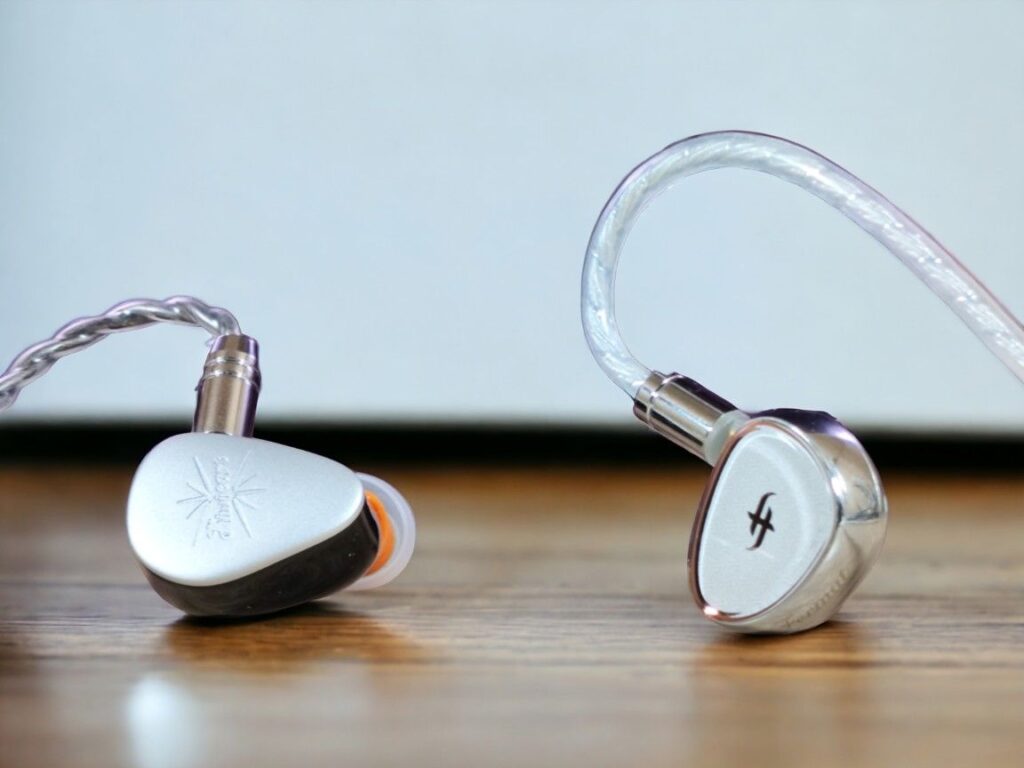
KIWI EARS QUINTET
The Quintet is a 5-driver hybrid IEM that I find to perform extremely well.
With the brass nozzles installed on the EA1000, they are quite similarly tuned. They have both a solid bass, a present mid-range and a well-articulated treble.
The way they differ is primarily in how they render the music and present fine detail. The Quintet has a more prominent sense of texture and sharper cut detail, but in direct comparison to the EA1000, it can sound a bit dry. The EA1000 has a slightly less hyper-articulate presentation but it is still very detailed sounding. It just presents the music in a more organic and liquid manner.
Full comparison here
Buy on Linsoul: Kiwi Quintet
Buy on Amazon: Kiwi Quintet
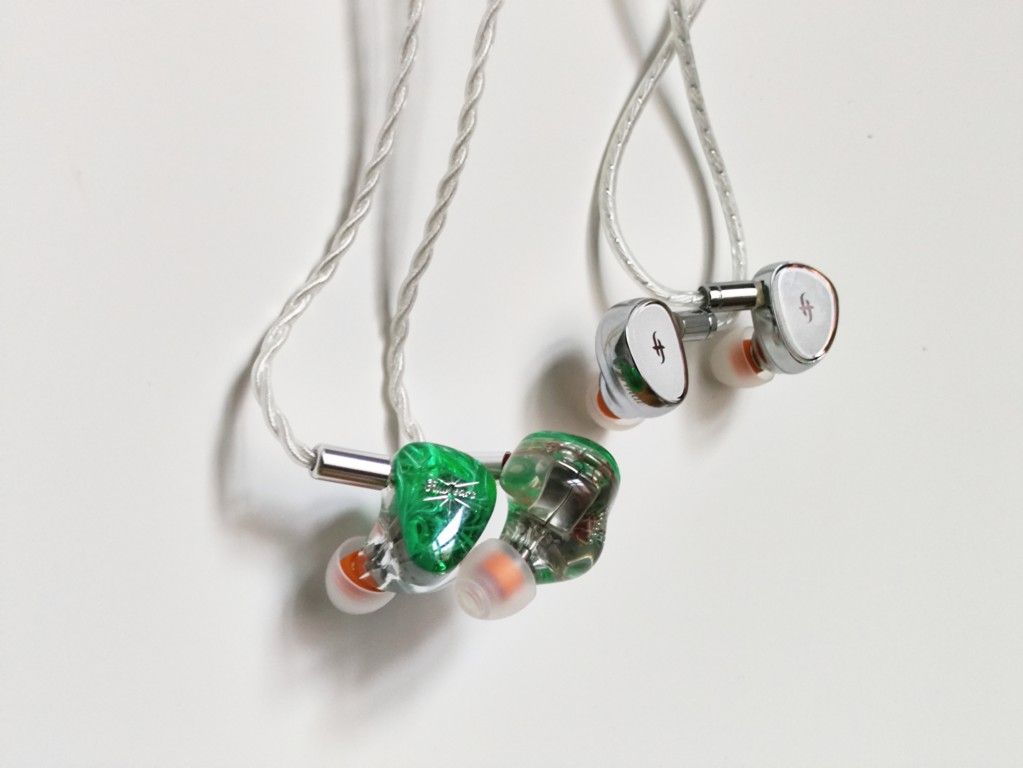
KIWI EARS ORCHESTRA LITE
The Orchestra Lite is another great IEM, which has no less than 8 Balanced Armature drivers.
The most obvious difference between these two is that the EA1000 has somewhat more bass quantity, at least with the golden brass nozzles. The midrange often sounds a bit different but it’s hard to tell which has the best timbre, it varies from track to track and both are great. I think the treble is very similar.
They also have similar soundstage and dynamics, both in terms of macrodynamics and microdynamics. With regards to detail retrieval capabilities, I find them quite similar there too, and both are very good. Both have good tonal weight and body, they’re full-sounding and still have lots of fine nuances. Both sound more musical than technical.
It is actually quite fascinating that they sound so similar because they have totally different driver technologies. The Orchestra Lite has all Balanced Armatures, and the EA1000 has a single Dynamic Driver.
Buy on Linsoul: Kiwi Orchestra Lite
Buy on Amazon: Kiwi Orchestra Lite
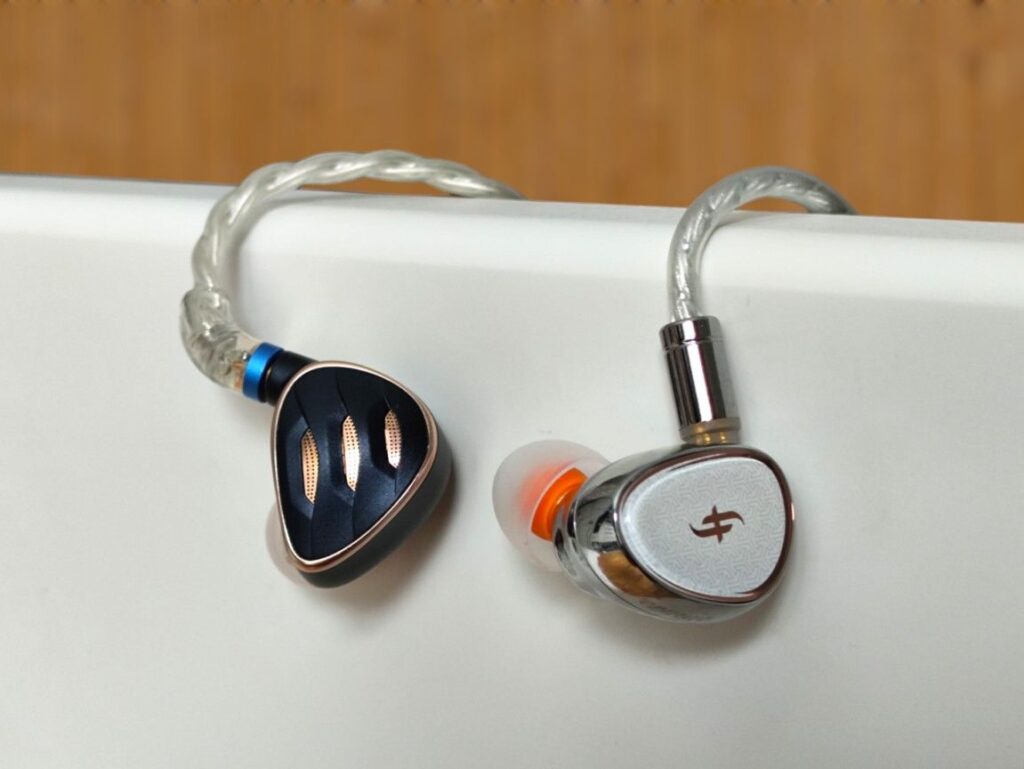
FIIO FH5S
The FH5S sports 2 Dynamic Drivers and 2 Balanced Armature drivers. It has 3 tuning switches. I compared these two earphones with the tuning switches of the FH5S set to 0 and the EA1000 with the brass nozzles.
They have several similarities as well as notable differences. The tonal balance is not very far apart. I like the sound signature of both. Neither are too bassy, both have a nice presence in the midrange, and both have detailed highs that aren’t too bright. They have a wide and open soundstage with good imaging.
They do, however, have different ways of presenting the music. The FH5S has a dry warmth to its sound and excels at conveying textures. The EA1000 is more organic and liquid, yet still highly detailed.
Full comparison here
Buy on Amazon: FiiO FH5S
Buy on Linsoul: FiiO FH5S
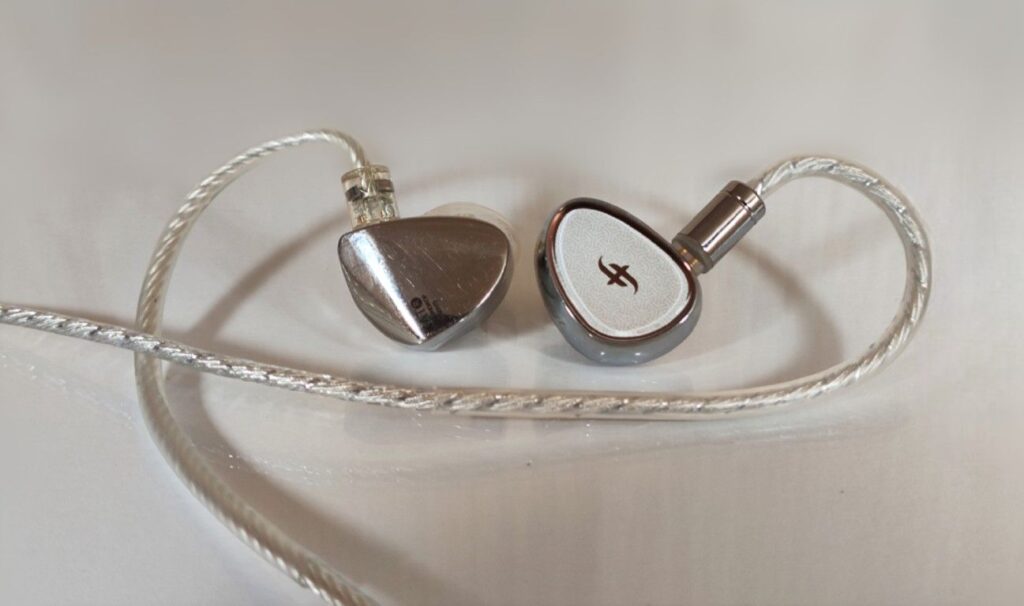
MOONDROP KATO
The Moondrop Kato is an excellent IEM with a 10mm full-range Dynamic Driver, just like the EA1000. It has a great sound signature and very nice timbre. It combines detail with a natural and organic full-bodied sound with good dynamics.
The EA1000 with the golden brass nozzles is very much like the Kato – it just does everything a little better across the board. The bass goes deeper and has more detail. The midrange is clearer but still very natural sounding. The treble is more refined, without getting analytical or dry. The soundstage is pretty similar but imaging is taken up a notch or two by the EA1000.
Buy on Linsoul: Moondrop Kato
Buy on Amazon: Moondrop Kato
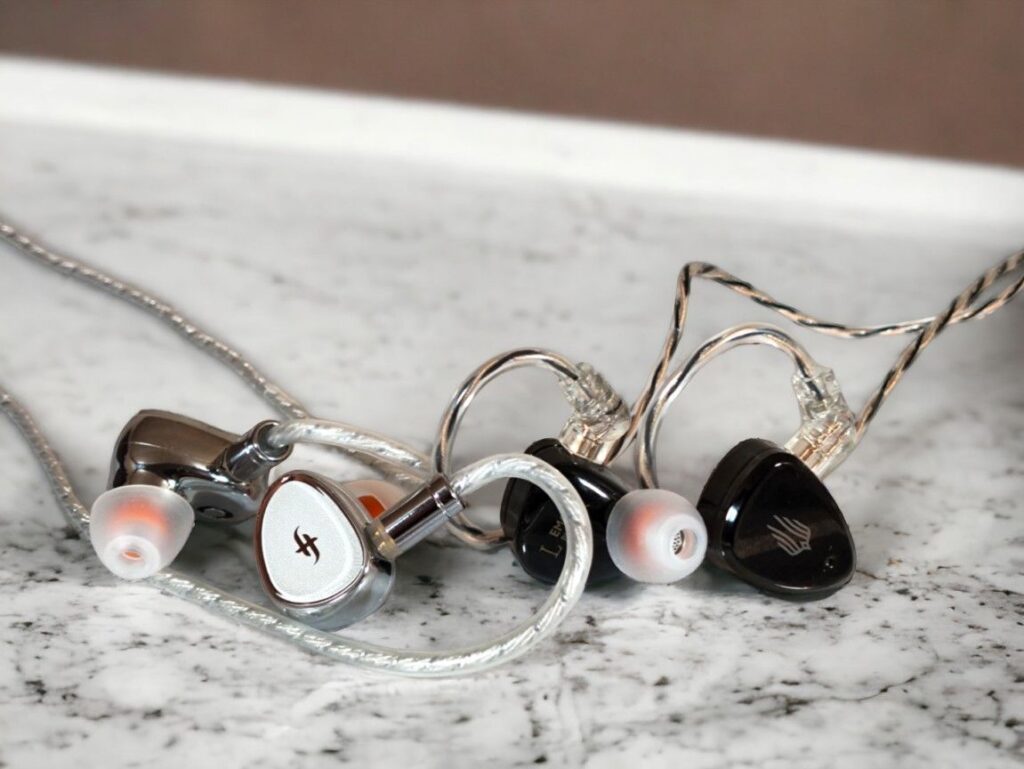
SIMGOT EM6L
The EM6L is a hybrid IEM with 1 Dynamic Driver and 4 Balanced Armatures.
Comparing the EA1000 and EM6L, I find that the tonal balance is relatively similar. What stands out the most with the EM6L is its great dynamics and imaging capabilities. Sometimes it can sound a bit aggressive and sharp in direct comparison to the EA1000 but that is the exception. Mostly it sounds very good.
The EA1000, however, offers a more nuanced and organic presentation. There is more subtle detail but less dynamic contrast and the imaging is not as precise.
It really has a very natural and beautiful timbre. It also has more tonal weight and body, but this is at the cost of imaging precision.
One thing that is worth mentioning is the difference in passive sound isolation. The EM6L far superior in this regard
The two IEMs are quite different in many ways and have distinct pros and cons. For gaming, I would not hesitate to recommend the EM6L. The imaging is very precise and the sound stage is impressive. For music listening I definitely for the most part prefer the EA1000 for its luscious sound, fine details, and phenomenal timbre.
Buy on Linsoul: Simgot EM6L
But on Amazon: Simgot EM6L
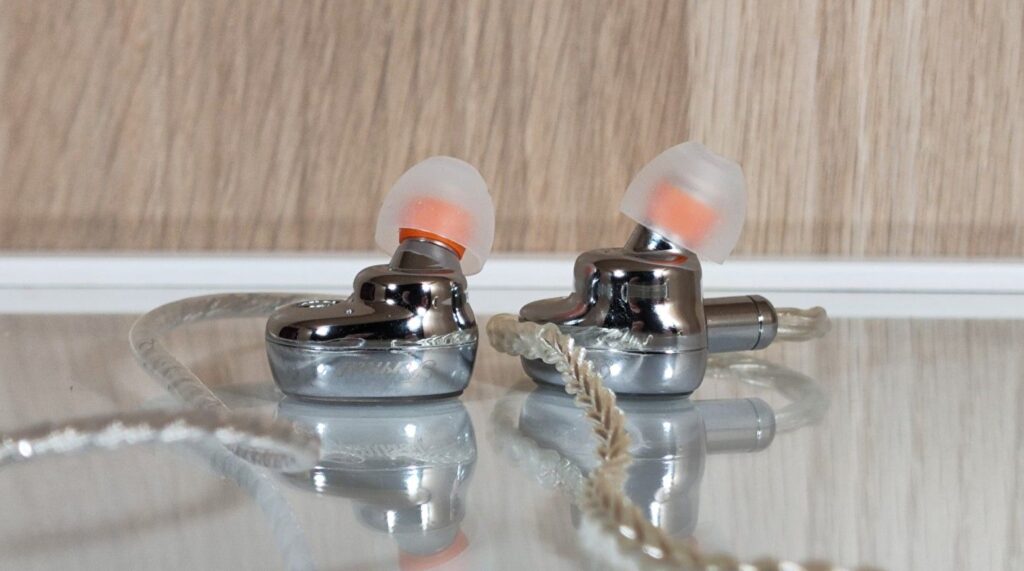
SIMGOT EA2000
The EA2000 is Simgot’s flagship, and the EA1000 is heavily inspired by its bigger brother. They look almost identical and use very similar driver technology. The EA2000 does however has a bigger housing (see picture above) because it has a bigger 12mm driver. It might not sound like too much, but the surface area is actually 50% larger. On paper, it is less sensitive and more demanding on the amplifier than the EA1000. Since I am using the Topping A90 amp, there is never a shortage of power in this comparison, though.
I have compared the EA2000 to the EA1000 with both the golden brass nozzles and the black ring steel nozzles installed. Generally, swapping the EA1000’s nozzles does not make an impact that is large enough to change the main differences I observe between the EA1000 and EA2000.
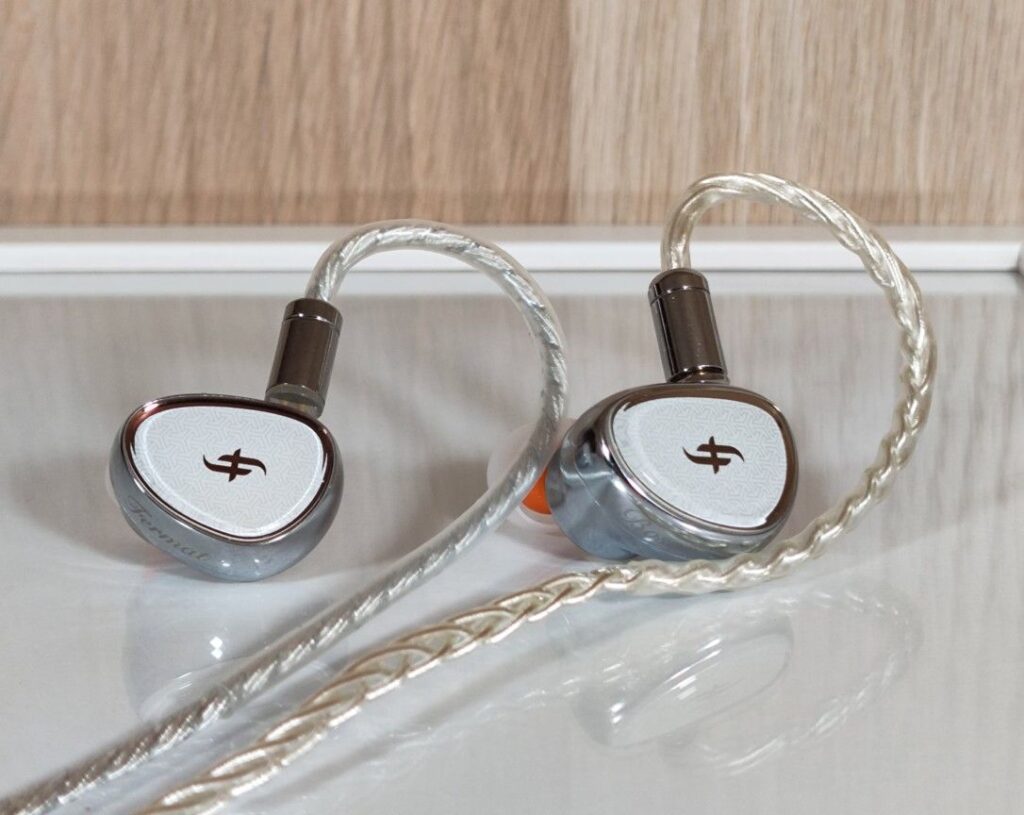
Starting with the bass, the EA2000 does sound more powerful. It’s not necessarily more “bassy”, it just seems to have more presence in the sub-bass region. The bass is also somewhat more dynamic and even better defined.
The midrange is a bit brighter with the EA2000 and has a bit more detail. The EA1000, on the other hand, has more weight and body to the mids.
The treble of the EA2000 is clearer and brighter, even when I have the black ring nozzles installed on the EA1000, the EA2000 sounds more airy and has even better resolution.
Generally, the EA2000 feels more dynamic all across the frequency spectrum. In addition, the soundstage is slightly larger, instrument separation and imaging are better. I find the general detail level of the EA2000 to be higher. Small background noises and sounds from instruments like e.g. resonances in the body of a plucked violin, are more audible.
I have read in several places that the EA1000 is the new flagship and a better EA2000 at a lower price. That certainly does not correspond with my own experience and what I am hearing. The EA1000 is a great IEM, but the EA2000 is a worthy flagship.
Buy on Linsoul: Simgot EA2000
Buy on Amazon: Simgot EA2000
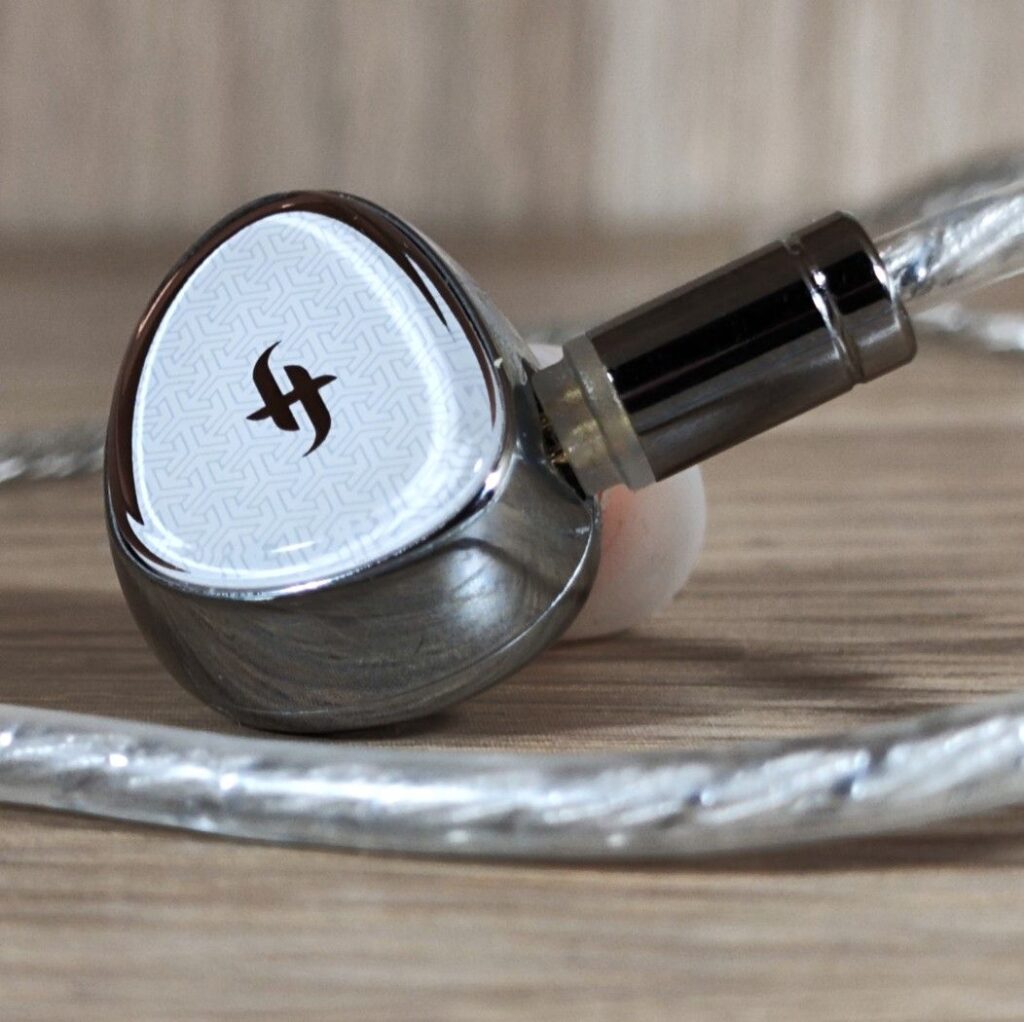
AMPLIFICATION
So far I have been listening to the EA1000 with desktop amps. Primarily the Topping A90, but I’ve also used the RME ADI-2 DAC FS as a standalone DAC/Amp with very good results. I did also try out some portable options, comparing them to the Topping A90 for reference.
Poco F5 phone 3.5mm jack: This sounds surprisingly good. It is not as detailed and dynamic as the desktop rig but it is definitely good enough for a weekend trip. The EA1000 still sounds like the EA1000. Straight out of the headphone jack from the phone. It is a shame most phones today do not have a headphone jack.
AudioQuest Dragonfly Red sounds better than the phone and it’s not doing the EA1000 much injustice. A thicker and warmer sound than the desktop setup.
THX Onyx USB dongle: This takes a performance up a notch and it gets quite close to the desktop rig. Even though it cannot match the last bit of detail and dynamics from a setup to many times the price, I’m really impressed and it definitely gives you a pleasant and musical presentation, with lots of detail and good dynamics.
Xduuo Link 2Bal sounds really great too, and has lots of power even with the unbalanced output. I think this is the best portable match so far. Great separation, imaging and a detailed powerful sound.
Concluding on amplification, even though I have done most of my listening on a desktop setup, I would be very surprised if the EA1000 can’t be driven to its full potential by a high-quality portable unit.
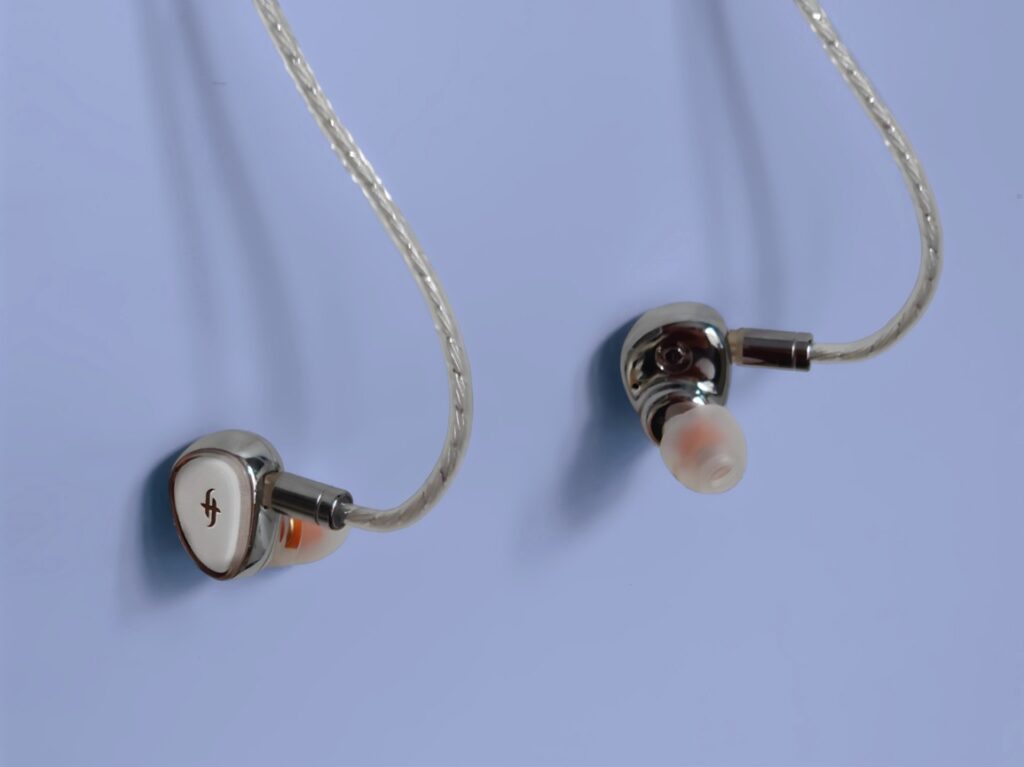
WRAPPING IT UP
Treble
The treble of the EA1000 is very nice. It sounds natural, organic and liquid. It does not have sharp edges like many earphones can have. The treble quantity depends very much on the nozzle you choose to use, but even with the brightest (black ring) nozzle I seldom find the treble to be too bright.
Midrange
The midrange has a very good presence and there is body and weight to the sounds and tones. It is on the warmer and fuller side and I really enjoy the natural sounding timbre. Depending on the nozzle, the mids sound a bit different, mainly because the treble and bass affect the perception of the midrange.
Bass
The bass quantity will depend on which nozzle you have mounted. However, bass quality is always good and it does not really change much with the nozzles. It sounds tighter with the nozzles that are more polite in bass quantity, especially the black ring. Anyway, I really like the bass on the EA1000. It is organic and full-bodied yet with lots of definition and texture.
Soundstage, Imaging, Dynamics and Detail
The EA1000 has a wide and deep soundstage. Some IEMs sound even larger, but usually they also sound thinner. The same goes for imaging. The EA1000 is good, but not the best I’ve heard. It is a trade off between sound stage and imaging on the one side, and the organic full-bodied presentation on the other.
Macrodynamics are also good even though there are some IEMs that can feel snappier. Microdynamics and the articulation of detail and fine nuances is excellent. There is an effortless and liquid way of rendering subtleties that is very fascinating.
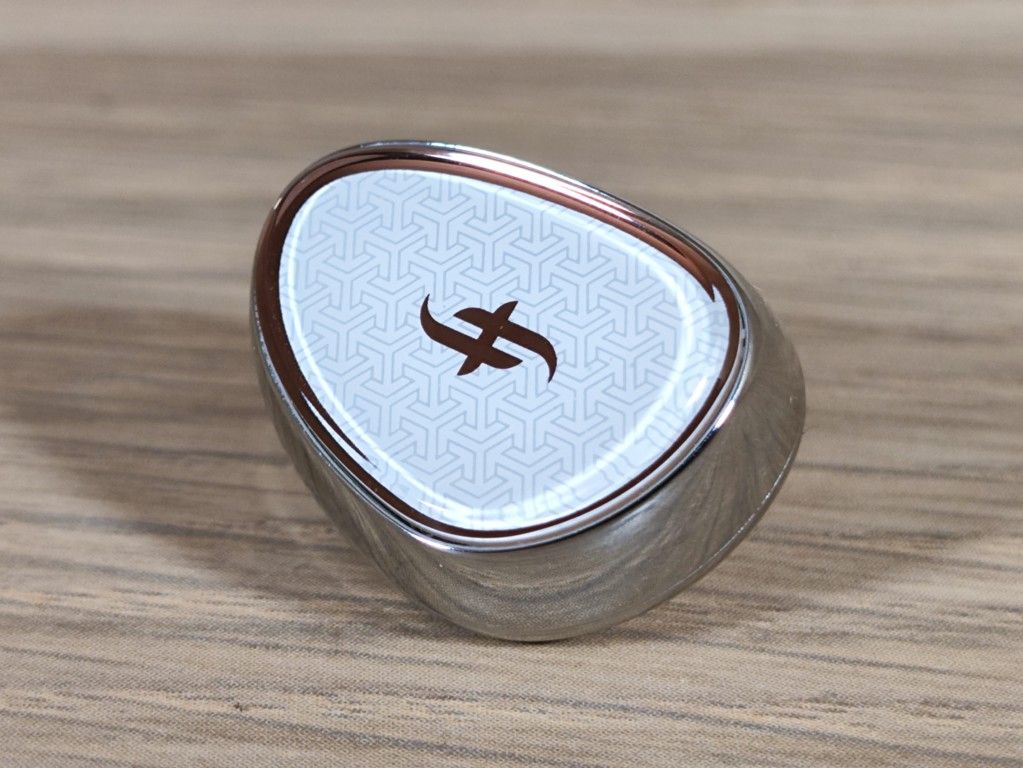
CONCLUSION
The Simgot EA1000 is an excellent IEM at a great price. The craftsmanship and build quality is simply stunning, especially at this price point. The sound is organic with lots of body and soul, and the music is rendered with a very natural timbre. There’s lots of fine detail and dynamics. The three supplied tuning nozzles are very efficient in fine-tuning the sound to the listeners preferences and makes the EA1000 a very versatile choice. Easily recommended.
Manufacturer link: Simgot EA1000
Buy on Linsoul: Simgot EA1000
Buy on Amazon Simgot EA1000
We make earnings through affiliate links and any purchase you make on Amazon or Linsoul clicking one of our links will give us a small provision at no cost to you.
We only get a provision for items that are not returned, so there’s no incentive for us to recommend something that’s not good.
Linsoul : Headphones, Earbuds, Wireless Earbuds, Desktop DAC/AMP, Portable DAC/AMP, Digital Audio Players,
Amazon: Headphones, IEMs, Headphone Amplifiers, Home Audio or Anything else.
.
If you enjoyed this article or other content on The Headphoneer, you might consider leaving a small donation to keep this website up and running. No donation is too small. Thanks for supporting us!
If you like our work please follow us on Instagram, Facebook and Twitter , it will help us grow. Sharing is caring 🙂
Disclaimer: The review unit was sent to us by Simgot for the purpose of this review. No matter where we get the review units from, we always write honest reviews. Writing is our passion and we want the readers to view us as a reliable source of good information and subjective impressions.


